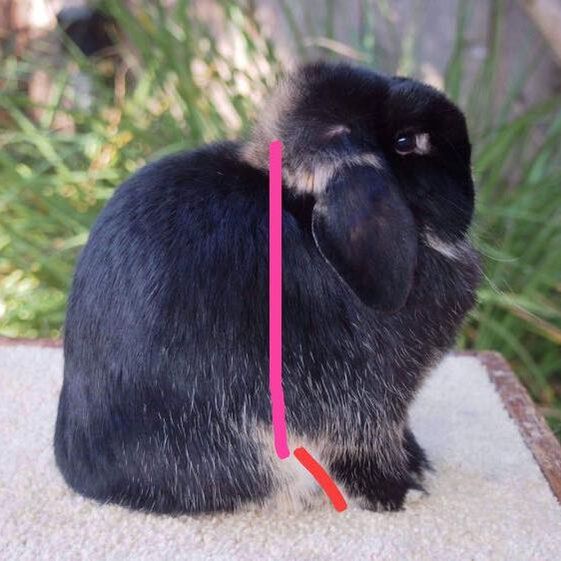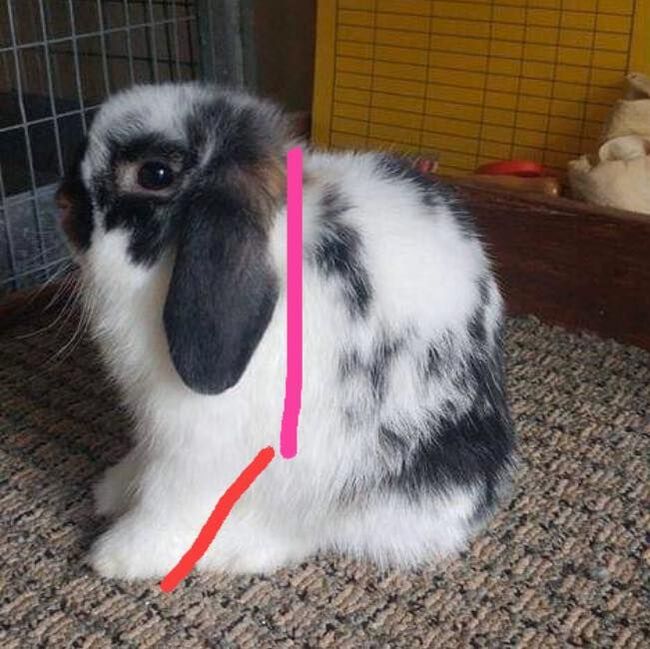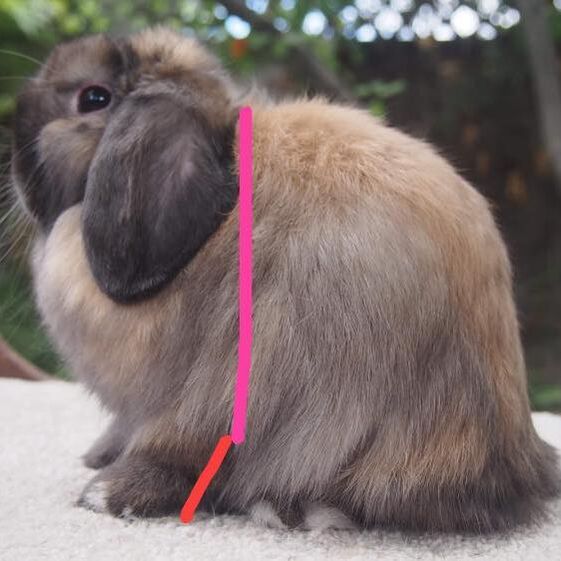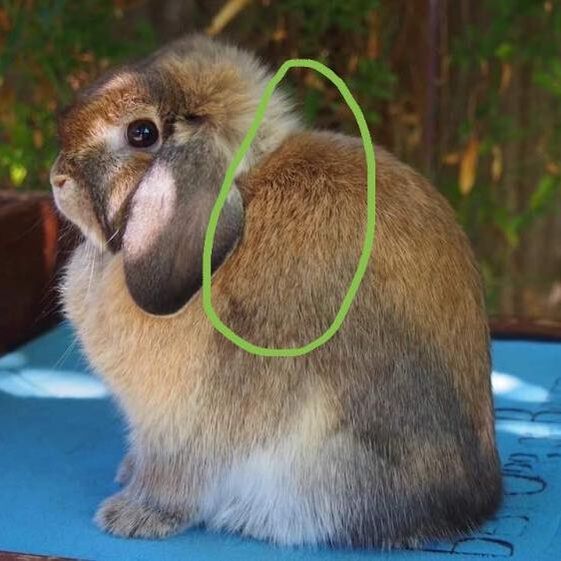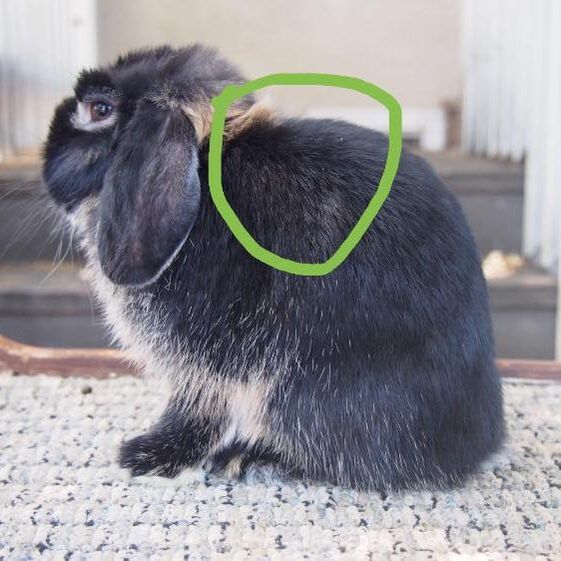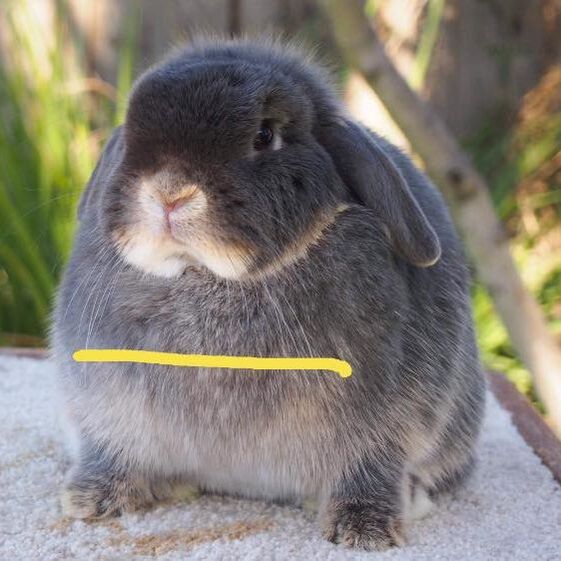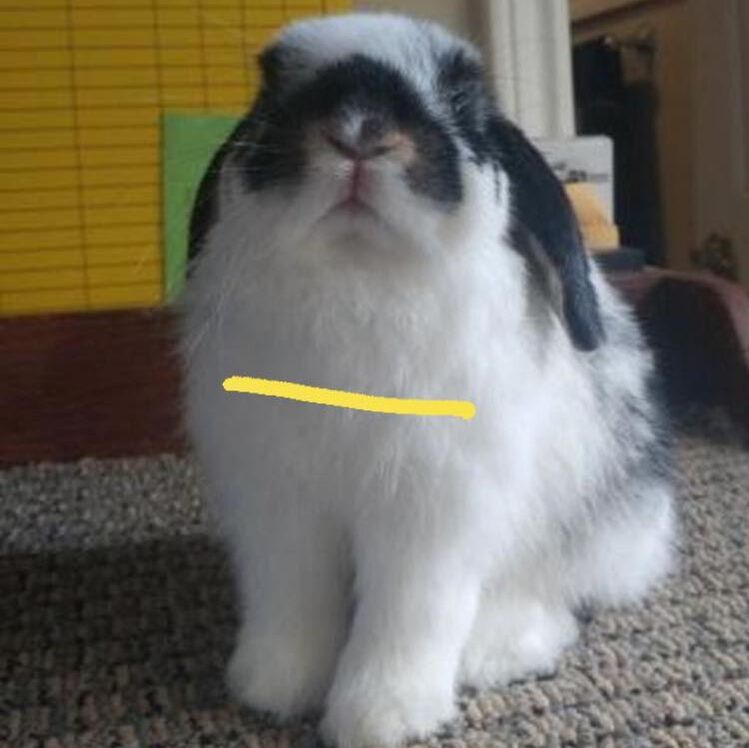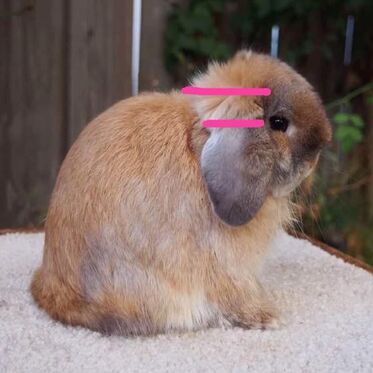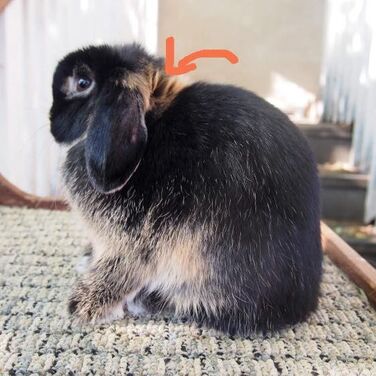This seems to be another topic that many newer breeders struggle with. Here is my current understanding of shoulders in Hollands.
First off, there are two VERY important things to keep in mind:
1. It is close to impossible to evaluate shoulders if the rabbit is incorrectly posed.
2. It is close to impossible to evaluate shoulders if the picture is at an angle. It must be a full side profile with the head carried in line with the body rather than pointed toward or away from the camera.
There are three primary dimensions of the shoulder to look at when evaluating. They are:
a) Depth
b) Length
c) Width
Be prepared to see some of the ugliest rabbits I’ve ever raised. It took quite a lot of digging to find some of these photos. Enjoy lol.
The doe on the left has excellent depth of shoulder (the pink part), coupled with extremely short front limb (red part).
Next is the middle picture. I know what I said about avoiding angled pictures lol, but this was the best I could find to demonstrate this fault. This rabbit not only has a low shoulder, but it also has an extremely long front limb. So despite the fact that it poses up high, it’s completely structurally incorrect. A Holland Lop’s high headset should be because of a deep shoulder and short front limb, not the other way around!
On the right is a low shoulder. However, the front limb is an appropriate length. Despite how unattractive this combination is, it should be preferred over an animal such as the previous one that disguises its low shoulder with yet another fault (the long front limb).
First off, there are two VERY important things to keep in mind:
1. It is close to impossible to evaluate shoulders if the rabbit is incorrectly posed.
2. It is close to impossible to evaluate shoulders if the picture is at an angle. It must be a full side profile with the head carried in line with the body rather than pointed toward or away from the camera.
There are three primary dimensions of the shoulder to look at when evaluating. They are:
a) Depth
b) Length
c) Width
Be prepared to see some of the ugliest rabbits I’ve ever raised. It took quite a lot of digging to find some of these photos. Enjoy lol.
The doe on the left has excellent depth of shoulder (the pink part), coupled with extremely short front limb (red part).
Next is the middle picture. I know what I said about avoiding angled pictures lol, but this was the best I could find to demonstrate this fault. This rabbit not only has a low shoulder, but it also has an extremely long front limb. So despite the fact that it poses up high, it’s completely structurally incorrect. A Holland Lop’s high headset should be because of a deep shoulder and short front limb, not the other way around!
On the right is a low shoulder. However, the front limb is an appropriate length. Despite how unattractive this combination is, it should be preferred over an animal such as the previous one that disguises its low shoulder with yet another fault (the long front limb).
Next thing to evaluate is length of the shoulder. We want a short shoulder. Short means front to back, as in head to tail. A short shoulder, coupled with a well rounded midsection and a smooth transition to the hindquarter, make for a correct topline. The animal on the left has excellent shortness of shoulder. Side note: She also has excellent depth of shoulder.
The doe on the right is an example of shoulder length. It is often coupled with a low shoulder and/or a low head mount. Imagine if you took an inch or two off that area above. Wouldn’t the topline be so much prettier? If you’re looking at a rabbit and you think it would look prettier if you removed some of the spine from that area, then odds are it has a long shoulder.
Next thing to evaluate is shoulder width. This is best done by feeling the rabbit, but in the absence of that, here is a picture. Shoulder width is often coupled with chest width. The animal should fill your hands and feel strong and muscular. It should not feel narrow. Ideally we want the shoulder to be as wide as it is deep. The doe on the left has an extremely wide shoulder that balances well with her depth.
The rabbit on the right is an example of a narrow shoulder. Imagine getting your hands on this buck. He wouldn’t feel very strong or massive, would he? He’d feel narrow. Side note: This rabbit also has extremely long front limb.
Next let's talk about a couple of random shoulder faults. The buck below has a slightly low head mount, which is connected with having a lower shoulder. The eye should be in line with the start of the topline, and his is below the start of the topline. It’s not terrible, he’s not hugging the table, but it’s still there. One of the telltale signs is that his head is pointing downward.
The rabbit below has a shoulder dip. The shoulder dips inward, it’s pretty self explanatory. Unlike most breeds, Hollands do not have any “rise”. The start of the shoulder should be the highest part of the body. When there’s a dip, it is no longer the highest part. It then rises before it falls again.
If you feel an extreme dip or deviation in this area, it may be a hooked spine. This is best felt when the rabbit is on its back.
That's pretty much it! Shoulders are tricky to explain through photos, so I would definitely recommend getting an experienced breeder or judge to teach you in person to further your knowledge. Hopefully this article has given you a good start!
